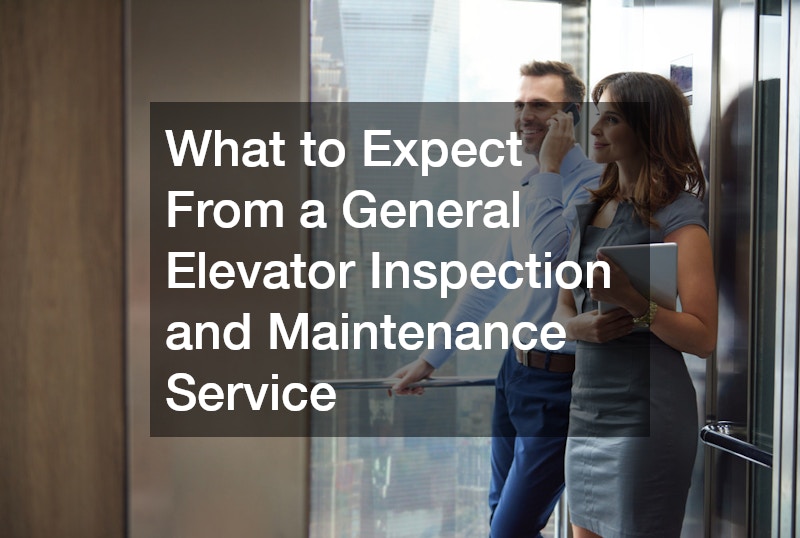This article will explore the essential aspects of general elevator inspections and maintenance services, discussing common questions and expectations. Elevators are crucial components of modern buildings, enabling seamless vertical transportation for thousands of users daily. Regular inspections and maintenance ensure that these systems operate safely and efficiently, benefiting both users and building owners.
What is Included in a General Elevator Inspection?
A general elevator inspection typically encompasses a thorough examination of various components and systems to ensure compliance with safety standards. Inspectors will assess mechanical parts, such as the drive systems, hoist cables, and counterweights, to confirm they are functioning correctly and within safety limits. Additionally, they check safety mechanisms, including emergency brakes, alarms, and doors, to ensure they activate and perform adequately during a malfunction.
During the inspection process, technicians examine the elevator control system to verify that it responds properly to commands and operates smoothly. This includes assessing the lift’s leveling accuracy, responsiveness to user input, and the efficiency of the control panel. They also perform visual inspections of the elevator shaft and machine room, identifying any potential hazards or signs of wear and tear that could compromise operations.
Compliance checks are another critical aspect of the general elevator inspection. Inspectors will review the elevator’s adherence to local building codes and regulations, ensuring that it meets necessary requirements for safety and performance. This thorough process helps maintain not only the safety of passengers but also protects building owners from potential legal ramifications associated with non-compliance.
How Often Should Elevator Maintenance be Conducted?
The frequency of elevator maintenance is essential for safety and performance, and various industry standards guide the recommended schedule for maintenance visits. Generally, it is advised that elevators undergo maintenance at least once every three months, depending on the type of building and the elevator’s usage frequency. High-traffic buildings may require more frequent checks to ensure safety and reliability.
Factors influencing the maintenance schedule include the age of the elevator, its usage patterns, and the environment in which it operates. Elevators in buildings with heavy foot traffic may need monthly checks, while those in residential settings might have less frequent needs. Building managers should also consider any unique operating conditions, such as extreme weather or heavy loads, which could necessitate alterations to the maintenance schedule.
Regular assessments of the elevator’s condition during maintenance provide an opportunity to identify and resolve potential issues before they escalate into costly repairs or safety risks. By adhering to a recommended maintenance schedule, building owners can ensure that their elevators operate efficiently and consistently, ultimately prolonging their lifespan and reducing the need for major overhauls.
What Common Issues Are Found During Inspections?
During elevator inspections, several common issues frequently surface, highlighting the importance of regular evaluations. Mechanical wear is a typical concern, especially in long-term installations where components like cables, pulleys, and bearings have experienced significant use. Inspectors often find frayed cables or worn-out gears that require immediate attention to prevent failures.
Safety violations can also emerge during thorough inspections, such as malfunctioning safety features or inadequate signage regarding elevator weight limits. These violations compromise passenger safety and require rectification before the elevator can safely resume operation. Inspectors meticulously document these findings, ensuring that building owners are aware of their obligations to maintain safety standards.
Another recurring issue that inspectors encounter is electrical problems, including faulty wiring or malfunctioning sensors in the control systems. These problems can lead to erratic behavior or system failures, increasing downtime and repair costs. By addressing these common issues during inspections, elevator maintenance services play a crucial role in ensuring the overall safety and reliability of vertical transport systems.
What are the Benefits of Regular Elevator Maintenance?
The benefits of conducting routine elevator maintenance and inspections are significant, with safety being the paramount concern. Regular servicing helps identify and rectify potential issues before they escalate into serious safety hazards. Ensuring that all safety features and systems operate correctly protects passengers, reducing the risk of accidents in the elevator’s operation.
Improved performance is another advantage of regular elevator maintenance. Consistent checks and repairs contribute to smoother operation and shorter wait times for users. Elevators that are well-maintained operate more efficiently, leading to enhanced user satisfaction and a positive experience for everyone relying on vertical transportation.
Finally, regular elevator maintenance can contribute to significant cost savings over time. By identifying issues early and preventing major repairs, building owners can save money on extensive overhauls and reduce downtime associated with elevator failures. Additionally, maintaining compliance with safety regulations can prevent potential legal costs associated with accidents or safety violations, providing peace of mind and protecting investments.
Understanding what to expect from a general elevator inspection and maintenance service ensures safety and efficiency for all elevator users. Regular inspections provide critical insights into the condition of elevator systems, allowing for proactive measures to be taken. Ultimately, prioritizing elevator maintenance translates into enhanced performance, safety, and user satisfaction in both commercial and residential settings.

